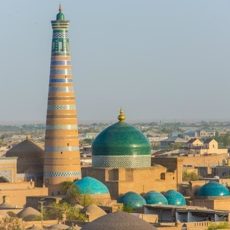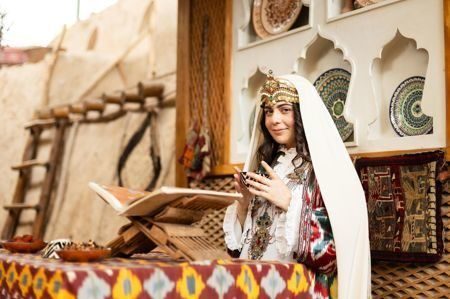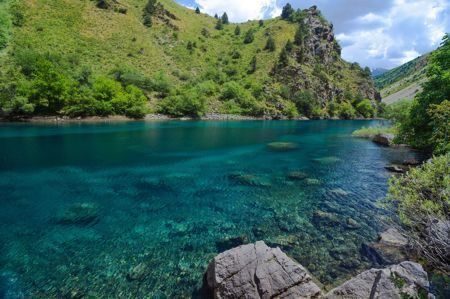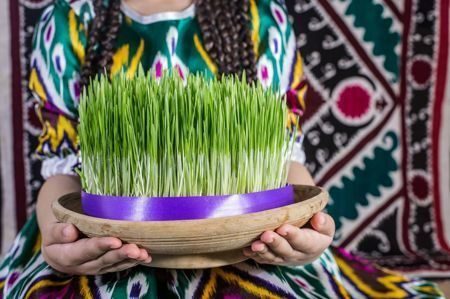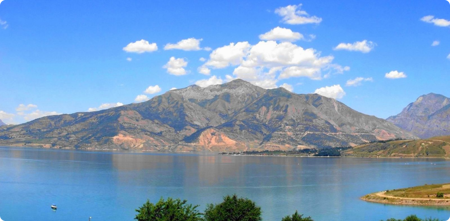Islam Khoja was the chief vizier of the khanate of Khiva under Muhammad Rahim Khan II (1863-1910) and his son Asfendiyar Khan (1910-1920). At his expense, a cotton gin factory, a hospital, a pharmacy, a post office, a Telegraph office, and a secular school were built in Khiva. In 1908-1910, Islam-Khoja built an ensemble in the South-East of Itchan-Kala, consisting of the smallest madrasah and the highest minaret of Khiva, which dates back to the ancient minarets of the XI-XII centuries.
The brick decor of The Kalyan minaret emphasizes its monumentality, its solid connection with the earth. The chiseled trunk of the Islam Khoja minaret is encircled by glittering ribbons of facings and is directed to the sky, in the haze of which its mosaics of blue, blue-white, and turquoise tiles dissolve and melt. Only the Kalyan minaret in Bukhara, which was conceived much earlier than the Islam-Khoja minaret, can compare in beauty and elegance with this minaret.
The best masters of their time Balta Vaisov, Ishmukhammad Khudaiberdyev, Kalandar Kuchum and others took part in its construction and preparation of decorative ornaments.
The top platform of the minaret at an altitude of 45 m is the highest point of view of the panorama of Khiva. The through lantern at its top has a stalactite cornice, finial and ceramic panjara grilles.
The small courtyard of the Islam Khoja madrasa is equipped with 42 hujras. The decor of the main facade of the madrasa serves as a worthy background for the minaret: blue-and-white majolica facings, tympanums and ribbons of glazed pattern. The South-Eastern part of the madrasa is occupied by a mosque, whose low massive dome balances the vertical of the minaret. The mosque's mihrab niche is separated by majolica and carved ganch.



